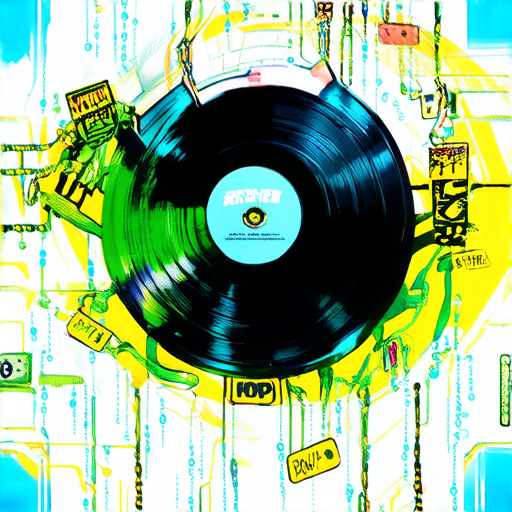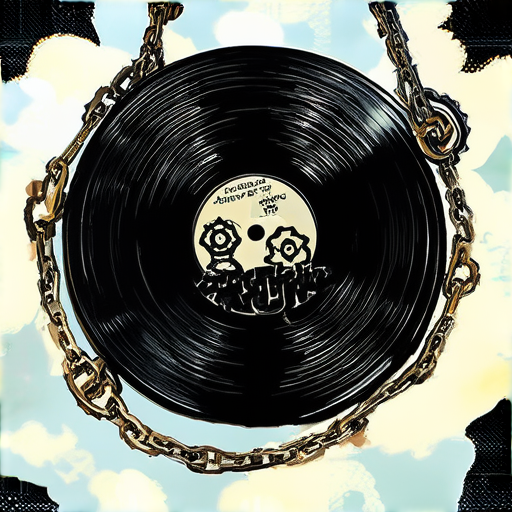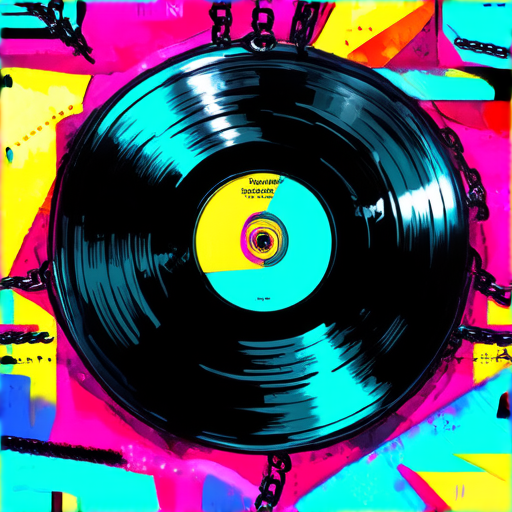From its humble beginnings in the early 1970s to its current status as a global phenomenon, hip hop music has undergone significant transformations, driven by technological advancements and cultural shifts. With its roots in African American and Latino communities in New York City, hip hop has evolved into a diverse and dynamic genre, influencing not only music but also fashion, art, and popular culture. As we explore the innovations that have shaped hip hop, we’ll delve into the technological advancements that have revolutionized music production, the history of hip hop development over time, and the unique aspects that make hip hop music stand out from other genres.

Technological Advancements of Hip Hop
Hip hop has undergone significant technological advancements since its inception, transforming the way music is created, produced, and consumed.
-
The Turntable
The turntable, invented in the late 19th century, revolutionized the way music was played and manipulated. DJs began experimenting with turntables, developing techniques such as scratching and beat-juggling.
-
The Synthesizer
The synthesizer, introduced in the mid-20th century, enabled musicians to create new sounds and textures. Hip hop producers began incorporating synthesizers into their music, expanding the genre’s sonic palette.
-
The Drum Machine
The drum machine, developed in the 1970s, allowed producers to program and sequence beats with unprecedented precision. This innovation transformed the way hip hop music was composed and arranged.
-
The Sampler
The sampler, introduced in the 1980s, enabled producers to sample and manipulate existing recordings. This technology further expanded the creative possibilities of hip hop music.
-
Digital Audio Workstations (DAWs)
DAWs, such as Ableton Live and FL Studio, have become essential tools for hip hop producers. These software programs offer advanced features for recording, editing, and mixing music.
-
Virtual Instruments and Plug-ins
Virtual instruments and plug-ins, such as virtual drums and effects processors, have greatly expanded the sonic capabilities of hip hop music. Producers can now access a vast array of sounds and effects with ease.
-
Cloud-Based Music Production
Cloud-based music production platforms, such as Soundtrap and Splice, have democratized music creation. Artists can now collaborate and produce music remotely, leveraging cloud-based tools and services.
-
Artificial Intelligence (AI) and Machine Learning (ML)
AI and ML technologies are increasingly being applied to music production, enabling artists to automate tasks, analyze audio data, and generate new sounds.
Hip hop’s technological advancements have not only transformed the music itself but also the way it is consumed and interacted with. From vinyl records to streaming services, the genre has adapted to changing technologies, remaining a vibrant and evolving force in popular culture.
Evolution of Hip Hop Over Time
Hip hop music has undergone significant transformations since its inception in the early 1970s.
-
Early Days (1970s)
Hip hop originated in the Bronx, New York City, as a fusion of African American and Latino youth cultures.
- The genre was heavily influenced by DJ Kool Herc’s innovative turntable techniques and Afrika Bambaataa’s Zulu Nation.
- Hip hop’s early days saw the emergence of MCing, DJing, breaking, and graffiti art.
-
Rise to Mainstream (1980s)
Hip hop gained popularity in the 1980s with the release of albums like “Raising Hell” by Run-DMC and “Straight Outta Compton” by N.W.A.
- This era saw the rise of gangsta rap, led by artists like Ice Cube and Snoop Dogg.
- West Coast hip hop emerged as a distinct style, characterized by G-Funk beats and lyrics that often glorified violence and crime.
-
Diversification and Experimentation (1990s)
The 1990s witnessed a proliferation of regional styles, including Southern rap, East Coast hip hop, and alternative hip hop.
- Artists like Tupac Shakur and The Notorious B.I.G. dominated the charts with their powerful storytelling and lyrical dexterity.
- Dr. Dre’s “The Chronic” and the Beastie Boys’ “Ill Communication” showcased the genre’s ability to incorporate diverse musical influences.
-
Globalization and Crossover (2000s)
Hip hop’s global reach expanded in the 2000s, with international collaborations and fusions with other genres.
- Kanye West’s “College Dropout” and Jay-Z’s “The Blueprint” exemplified the genre’s capacity for innovation and experimentation.
- Trap music, originating in the Southern United States, gained widespread popularity, characterized by heavy, synthesized beats and often dark, introspective lyrics.
-
Contemporary Scene (2010s-present)
Today’s hip hop landscape is marked by diversity, eclecticism, and technological advancements.
- Artists like Kendrick Lamar, J. Cole, and Chance the Rapper have pushed the boundaries of lyrical complexity and socially conscious themes.
- The rise of streaming platforms has democratized access to music, enabling emerging artists to gain recognition and connect with fans worldwide.
Hip hop’s evolution reflects its adaptability, creativity, and resilience in the face of changing social, cultural, and technological contexts.

The 5 Main Elements of Hiphop
I’m excited to dive into the core components that make up the rich and diverse world of hiphop.
-
Music
Hiphop music is characterized by its strong rhythmic beats, lyrical flow, and often socially conscious lyrics. From the early days of DJ Kool Herc to the modern-day trap and drill genres, hiphop has evolved significantly over the years. As a fan of hiphop, I appreciate how the genre continues to push boundaries and innovate.
-
Dance
Dance plays a vital role in hiphop culture, with styles ranging from breaking and popping to locking and voguing. These dance forms have been influenced by various cultures and have become an integral part of hiphop’s identity. Whether it’s performing at a cypher or simply grooving to your favorite track, dance is an essential element of hiphop.
-
Art and Visual Expression
Hiphop’s visual aspect encompasses graffiti, street art, and graphic design. Artists like Jean-Michel Basquiat and Keith Haring have made significant contributions to the world of hiphop art. Their work not only reflects the culture’s energy and creativity but also challenges societal norms and expectations.
-
Literature and Poetry
Hiphop literature and poetry are deeply rooted in the genre’s history, with pioneers like Gil Scott-Heron and The Last Poets paving the way for future generations. Spoken word and slam poetry have become increasingly popular, allowing artists to express themselves through powerful storytelling and social commentary.
-
Culture and Community
Hiphop culture is built around community and self-expression. From block parties to cyphers, hiphop brings people together, fostering a sense of belonging and creativity. As a member of the hiphop community, I’ve witnessed firsthand the impact that hiphop can have on individuals and society as a whole.

Two Things That Make Hip Hop Music Unique
Hip hop music has evolved significantly since its inception, and what makes it stand out from other genres is multifaceted.
-
Rhythmic Vocal Delivery
Rap and MCing are integral components of hip hop, and the vocal delivery plays a crucial role in setting it apart. Rappers use various techniques such as wordplay, metaphors, and storytelling to engage listeners and convey complex messages.
The flow and rhythm of rap are essential aspects of hip hop, and artists continually push boundaries to innovate and experiment with new styles.
-
Experimentation and Innovation
Hip hop’s uniqueness lies in its ability to blend diverse musical styles, incorporating elements from jazz, funk, electronic, and other genres. Artists like Kendrick Lamar, J. Cole, and Chance the Rapper have successfully merged hip hop with other styles to create something fresh and exciting.
This willingness to experiment and innovate has led to the development of sub-genres like trap, drill, and conscious rap, which cater to different tastes and preferences.
As a result, hip hop continues to evolve, pushing the boundaries of what is possible in music and inspiring new generations of artists and fans alike.
Three Interesting Facts About Hip-Hop
- Hip-hop originated in the early 1970s in the Bronx, New York City, emerging from African American and Latino youth cultures.
- The term “hip-hop” was coined by DJ Kool Herc, who is often credited with inventing hip-hop music, which combines elements of jazz, funk, and soul music with rhythmic speech and lyrical flow.
- Hip-hop has evolved into a global phenomenon, influencing various aspects of popular culture, including fashion, dance, film, and visual arts, with its impact extending beyond music to become a powerful force in social justice movements and activism.
Early Influences and Pioneers
- African American and Latino communities in the South Bronx played a significant role in shaping hip-hop culture, drawing inspiration from funk, soul, and jazz music, as well as spoken word traditions.
- Pioneering DJs like Grandmaster Flash and Afrika Bambaataa helped develop turntablism and MCing, laying the groundwork for future generations of artists.
- The Sugarhill Gang’s 1979 single “Rapper’s Delight” marked one of the first commercial successes of hip-hop music, introducing the genre to a wider audience.
Evolution and Global Impact
- Hip-hop’s influence expanded globally in the 1980s and 1990s, with artists like Run-DMC, the Beastie Boys, and Tupac Shakur achieving mainstream success.
- The rise of West Coast hip-hop in the 1990s, led by Dr. Dre and Snoop Dogg, further diversified the genre and paved the way for future regional styles.
- Today, hip-hop encompasses a vast array of sub-genres, from trap and drill to conscious rap and Afrobeat, reflecting the diversity and complexity of contemporary urban experiences.
Key Figures and Movements
- Kendrick Lamar’s critically acclaimed albums have pushed the boundaries of storytelling and socially conscious lyrics, cementing his status as a leading figure in modern hip-hop.
- The Black Lives Matter movement has seen hip-hop artists play a crucial role in amplifying marginalized voices and advocating for social justice, highlighting the genre’s continued relevance in contemporary activism.
- The growth of independent labels and online platforms has democratized access to hip-hop creation and distribution, enabling new artists to emerge and challenge traditional industry structures.

The Four Elements of Hiphop
I’m excited to dive into the roots of rap and explore the four essential elements or pillars of Hip Hop.
-
MCing (Rapping)
Rap is a vocal style that originated in the 1970s, characterized by rhythmic speech and lyrical flow. As a core element of Hip Hop, MCing involves delivering rhymes and lyrics over beats, often telling stories, expressing emotions, and conveying messages. From Kendrick Lamar to J. Cole, many artists have pushed the boundaries of rap, experimenting with new styles and themes.
Some notable examples of influential rappers include Tupac Shakur, The Notorious B.I.G., Nas, and Jay-Z. These artists have helped shape the sound of modern rap, incorporating storytelling, social commentary, and personal experiences into their music.
For those interested in learning more about the evolution of rap, I recommend checking out NPR’s article on the history of rap.
-
DJing (Turntablism)
Turntablism is the art of manipulating vinyl records on a turntable to create unique sounds and rhythms. DJs use various techniques, such as scratching, mixing, and beat-juggling, to create dynamic performances. From Grandmaster Flash to DJ Shadow, turntablists have revolutionized the way we experience music.
Modern DJs continue to innovate, incorporating digital tools and software into their sets. Some notable examples of influential DJs include Daft Punk, Skrillex, and Calvin Harris. These artists have helped push the boundaries of electronic dance music, experimenting with new sounds and styles.
For those interested in learning more about the art of turntablism, I recommend checking out Resident Advisor’s interview with DJ Shadow.
-
Breakdancing (B-boying/B-girling)
Breakdancing, also known as breaking, is a style of street dance that originated in the 1970s. Characterized by intricate footwork, spins, and flips, breakdancers perform complex routines to hip-hop music. From Rock Steady Crew to the Lockers, breakdancing crews have showcased their skills in battles and competitions.
Modern breakdancers continue to innovate, incorporating new moves and styles into their performances. Some notable examples of influential breakdancers include Richard “Crazy Legs” Colón and Adolfo “Shabazz” Quiñones. These dancers have helped popularize breakdancing, making it a staple of hip-hop culture.
For those interested in learning more about the history of breakdancing, I recommend checking out BBC Culture’s article on the history of breakdancing.
-
Graffiti Art
Graffiti art is a visual expression of Hip Hop culture, characterized by vibrant colors and bold graphics. Graffiti artists use spray paint, markers, and stencils to create murals, tags, and other forms of street art. From Taki 183 to Banksy, graffiti artists have made significant contributions to the world of art.
Modern graffiti artists continue to innovate, incorporating new techniques and mediums into their work. Some notable examples of influential graffiti artists include Jean-Michel Basquiat and Keith Haring. These artists have helped bring graffiti art into the mainstream, showcasing its beauty and significance.
For those interested in learning more about the history of graffiti art, I recommend checking out Hyperallergic’s article on the history of graffiti art.
In conclusion, the four elements of Hip Hop – MCing, DJing, breakdancing, and graffiti art – have come together to create a rich and diverse culture. Each element has contributed significantly to the evolution of Hip Hop, shaping its sound, style, and aesthetic. By understanding and appreciating these elements, we can gain a deeper appreciation for the complexity and beauty of Hip Hop culture.




0 Comments